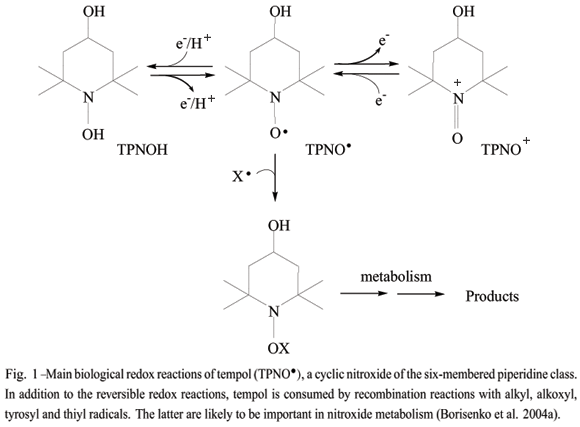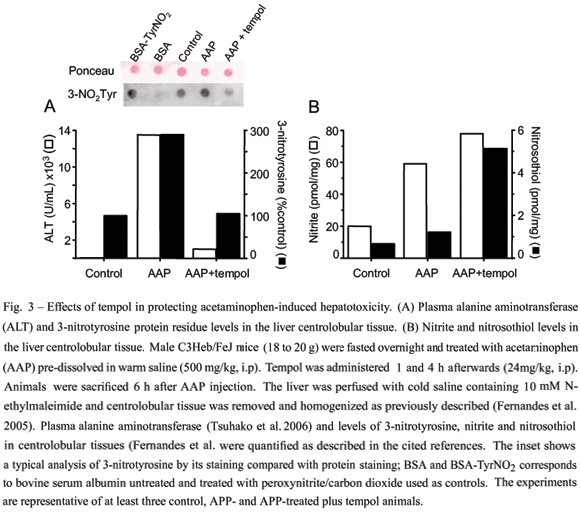The substantial therapeutic potential of tempol (4-hydroxy-2,2,6,6-tetramethyl-1-piperidinyloxy) and related cyclic nitroxides as antioxidants has stimulated innumerous studies of their reactions with reactive oxygen species. In comparison, reactions of nitroxides with nitric oxide-derived oxidants have been less frequently investigated. Nevertheless, this is relevant because tempol has also been shown to protect animals from injuries associated with inflammatory conditions, which are characterized by the increased production of nitric oxide and its derived oxidants. Here, we review recent studies addressing the mechanisms by which cyclic nitroxides attenuate the toxicity of nitric oxidederived oxidants. As an example, we present data showing that tempol protects mice from acetaminophen-induced hepatotoxicity and discuss the possible protection mechanism. In view of the summarized studies, it is proposed that nitroxides attenuate tissue injury under inflammatory conditions mainly because of their ability to react rapidly with nitrogen dioxide and carbonate radical. In the process the nitroxides are oxidized to the corresponding oxammonium cation, which, in turn, can be recycled back to the nitroxides by reacting with upstream species, such as peroxynitrite and hydrogen peroxide, or with cellular reductants. An auxiliary protection mechanism may be down-regulation of inducible nitric oxide synthase expression. The possible therapeutic implications of these mechanisms are addressed.
cyclic nitroxides; tempol; antioxidants; nitric oxide-derived oxidants; inflammation; acetaminopheninduced hepatotoxicity





